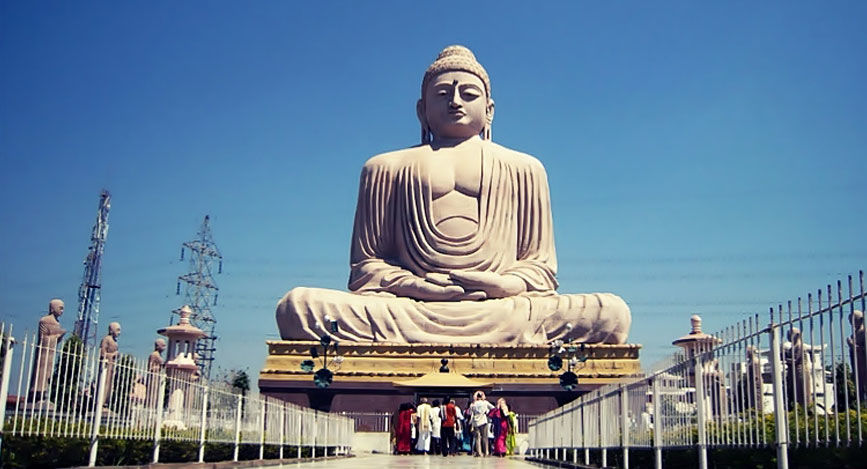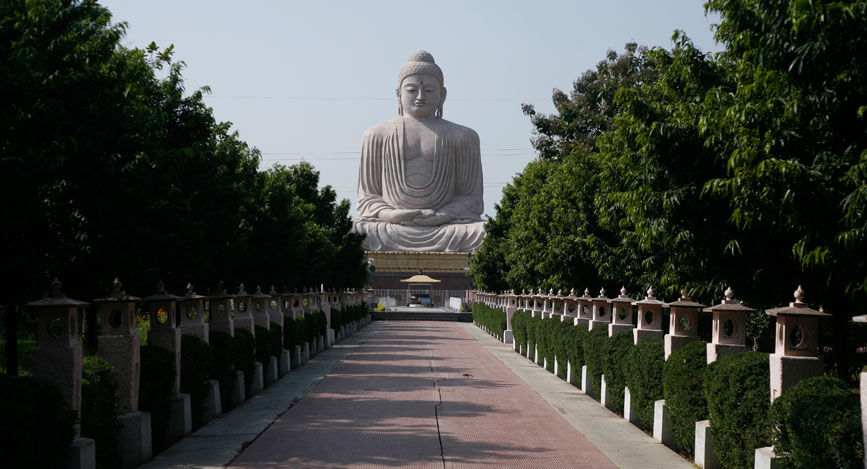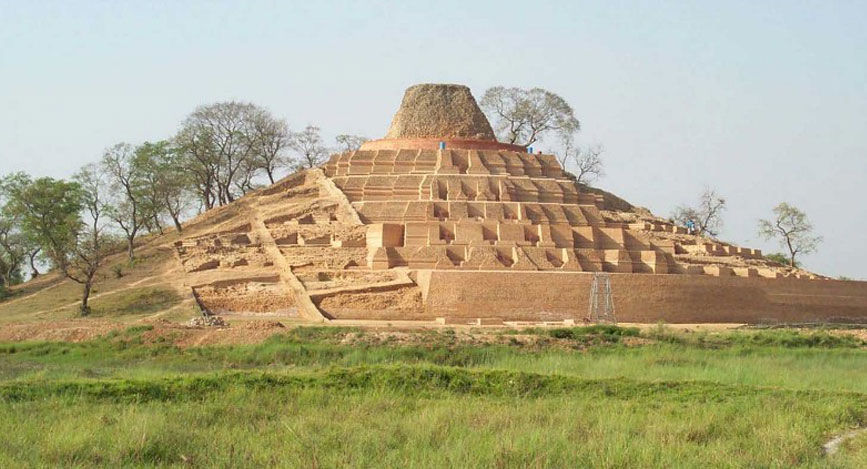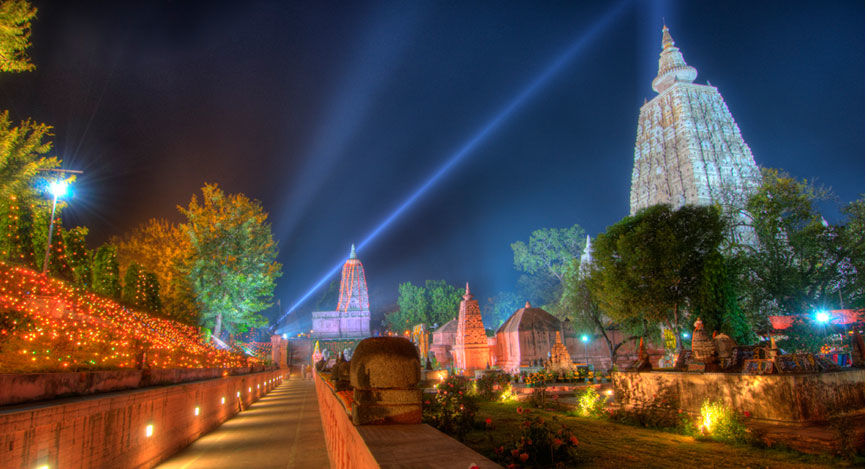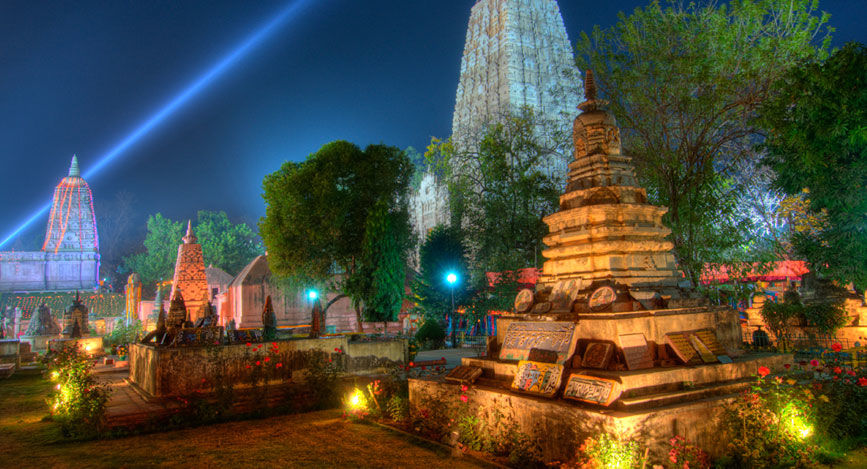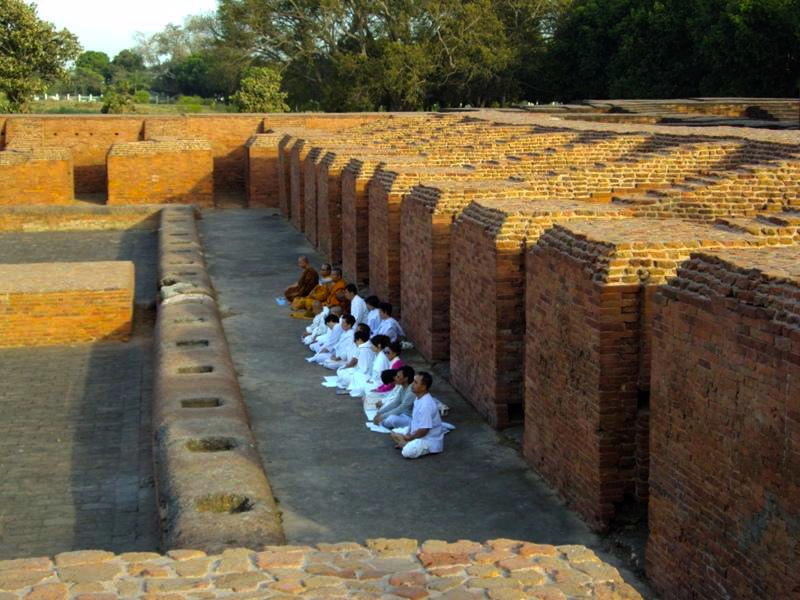The mention of Bihar doesn't exactly tingle the curiosity of a traveler as, say, a Kerala or a Rajasthan might. Having constantly found itself embroiled in political and economic disputes, and being one of the poorest states in the country, tourism isn't exactly what the state machinery is gearing itself towards promoting. However, it is precisely its non-visibility on the tourism map that makes Bihar an excellent destination for those looking to offroad in India. There is a rusticness about it, a certain raw energy that permeates through everything you will see and experience here that sets it apart from the tourist-driven cities which feel overly sanitised. Comparatively, Bihar is unapologetic and in your face.
Having been born and brought up here, I always heard stories of Bihar's glorious past. But it was in my years as a student of history at Delhi University that I truly grasped how crucial a role Bihar has played in the shaping of the subcontinent. Having been the seat of the Mauryan and Gupta empires between the 4th century BC and 7th century AD, and much later being the place from where Mahatma Gandhi launched the satyagraha movement -- which you can argue was the bedrock of the Indian independence movement -- Bihar has always been an excellent vantage point for a chronicle of the times. This is apparent even today when you travel through the land and experience the heady amalgamation of Buddhist, Jain, Hindu, Sufi, and Sikh influences.
Of the numerous journeys Bihar offers, I have picked out one with a healthy sprinkling of history, culture and beauty. It starts with the grand stupa in Kesaria, traces its path over to the Madhubani makers in the east and the Kaklot falls in the south and ends at Nalanda -- the ancient university of classical learning. This is my humble attempt at putting this state on the travel map -- a place where it truly belongs.
About half a day's drive from Patna, Kesariya sets the tone of a trip that exposes a whole treasure trove of lesser known Buddhist ruins. The Kesaria stupa, at 102 feet, stands as one of the tallest stupas in the world, though the tourism fanfare you would expect around such a prominent monument is conspicuously missing. It is difficult to explain in words what it is like to be in the presence of something so truly massive, but this stupa is huge. Popular legend says this is where Prince Siddhartha discarded his robes to become a monk, and there are 11 statues of the Buddha seated in each of the 11 star-shaped niches around the base, each with their head cut off by later invaders. What is truly a breathtaking site is made further fascinating by the revelation that the stupa was originally nearly 150 feet in hight, and sunk lower into the ground in the aftermath of a massive earthquake.
A short drive from Kesaria leads you to the quaint little district of Madhubani. You will recognize the name by its popularity as an art form that originated here. Madhubani painting uses a wooden splinter to create intricate potraits -- with Lord Krishna and marriages making up a majority of the themes -- that are then filled in with colour. Though there is little white space that remains when one of these is complete, there is never a feeling of clutter, the elements seem to come together in a beautiful symphony. With the art form gaining popularity off late, you will find nearly every household in certain villages of the district subsisting as Madhubani artists. Take an afternoon and walk through the villages of Ranti, Jitwarpur or Rashidpur and marvel at art coming to life in the most beautiful way, with house walls painted in this art form and members of the family engaged in creating scrolls and scrolls of unique paintings. Instead of buying these at a haat in some urban area, soak in the experience of actually being at the fountainhead of that creativity, talk to the artists themselves, get a wide variety of paintings to pick from, and take some home. Its the piece of art on my walls that will always have a special story.
A further drive from Madhubani towards the southeast leads you to Bhagalpur and one of the many gems that Bihar has tucked away in its landscape. As the lesser-known but larger of the two world-class universities set up King Dhramapal, Vikramshila is in a more dilapidated state but makes for a fascinating visit. I am glad for my driver who insisted I go... and also for the kitchen staff at my hotel in Bhagalpur who insisted I pack some lunch. There is not a trace of any place to eat or buy food in the viscinity. But you can take advantage of that. Pack some food and have your own private picnic in the place that fostered the highest echelons of classical learning back in the day.
If all the history is getting to you, the perfect break is a few kilometers away in the form of the Kakolat falls. I remember being dropped off at the beginning of a rocky trail that curved through the forests of Kakolat and led us to the grand waterfall. Nearly 150 feet in height, the falls dwarf you dramatically. But it is also a refreshing break from the monotony of the heat and the dust. The cooling waters rejuvenated me for a bunch of really crammed days of sightseeing to follow. I'd come back in a heartbeat -- though I'd try to skip the weekend crowd!
Bodhgaya is the one location that brings a steady trail of tourists into Bihar. As the site where Buddha attained enlightenment, its importance is immense and it occupies pride of place in the Buddhist telling of history. Despite the hundreds and thousands of tourists it continues to attract every day, there is a pervading sense of calm in the Mahabodhi temple complex -- where the Bodhi tree that marks the spot where Buddha meditated stands. I especially enjoy walking around the temple complex by night with the lights illuminating the small and big structures and the faint sound of Buddhist chants lending an ethereal serenity to the surroundings. You would really be missing out on something if you missed out on Bodhgaya.
Enroute to Nalanda from Bodhgaya, we stopped at what remains one of the most fascinating sights I have encountered. The Barabar caves are apparently the oldest rock-cut caves in India. Carved out of huge boulders, they have an eerieness about them that They stand at the end of a back-breaking four-hour-long ride on bumpy roads, but the uniqueness of the site was worth every bit of my excruciating back pain. Though the long drive left us little time to explore, what I did see has made me bookmark the place for a visit at leisure.
All through my ride to Nalanda, my head was whirling with thoughts of how it must feel to have studied in one of the premier centers of learning in the world all the way back in the 5th century. What would the classes have been like? What would the teacher-student rapport

